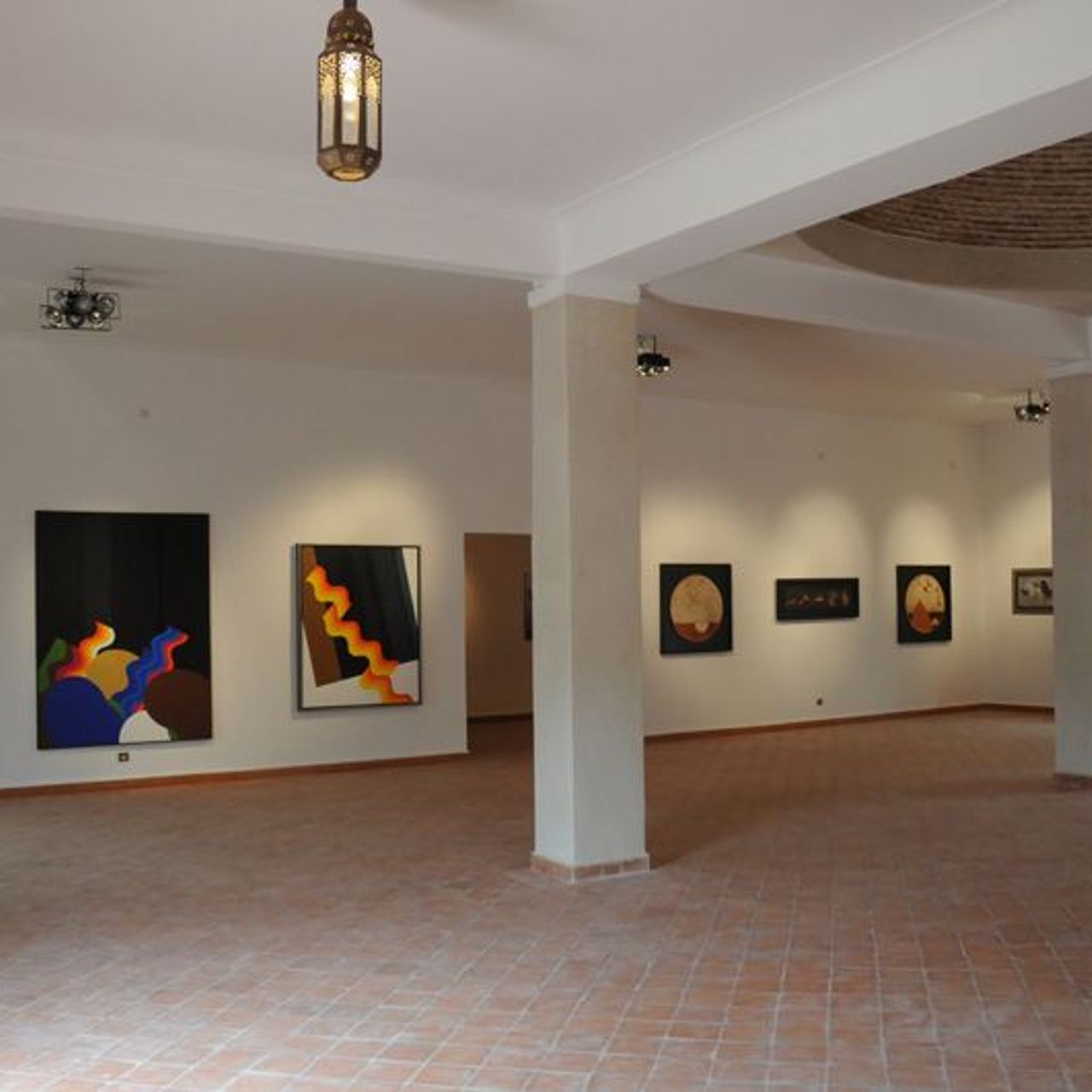"Mad" might be an apt description for some artists. "A wonder," each artwork at the Museum of Contemporary Art in the palmeraie could be honored with this title.
From end to end in art
Marrakech culture has recently nurtured a new addition within the palm grove. Considered illegitimate by traditionalist conservators, it is, on the contrary, the fulfillment of a wish made after the war by a generation of artists determined to disrupt art in its entirety. Abderrazak Benchaâbane is at the forefront of this contemporary demagoguery. In this arid land clinging to its roots, he has cultivated an oasis of intellect through a compelling collection of works from about fifty exclusively Moroccan artists.
Conceptual or contextual, minimalist or hyperrealistic, painted, glued, photographed, built, or deconstructed, Moroccan contemporary art is limited only by our thoughts. This is the lesson of this museum.
Conceptual or contextual, minimalist or hyperrealistic, painted, glued, photographed, built, or deconstructed, Moroccan contemporary art is limited only by our thoughts. This is the lesson of this museum.
An ancient agricultural property
Built on two hectares between palms and cacti, the architecture of the estate beautifully blends modern lines with a conventionally artisanal craftsmanship. Divided so that each artistic movement finds its place, the house is structured into various spaces, arranged among an Andalusian garden, a self-sustaining cactus garden, and an aquatic ecosystem.
Sheltered under its colossal bejmat dome, the first room dedicated to the precursors is bordered by two annexes grouping photography and calligraphy. After a brief passage in the fresh air where a delicate rose fragrance lingers, one enters a longitudinal room reserved for burgeoning young talent. The tour concludes with the final exhibition hall, segmented by seven arches, each independently housing a brief collection tracing the career of a creator. A surprising and diverse epilogue.
Sheltered under its colossal bejmat dome, the first room dedicated to the precursors is bordered by two annexes grouping photography and calligraphy. After a brief passage in the fresh air where a delicate rose fragrance lingers, one enters a longitudinal room reserved for burgeoning young talent. The tour concludes with the final exhibition hall, segmented by seven arches, each independently housing a brief collection tracing the career of a creator. A surprising and diverse epilogue.
From founding fathers to prodigious children
One of the first canvases to greet visitors is from Marrakech. A work by Hassan Glaoui, founding father of Moroccan nonconformism, it was from these few strokes of his brush that he wrote the future of his spiritual descendants.
From the same generation, but with a more pronounced and abstract style, Farid Belkahia found a new utility for henna, enhancing the material with forms of ancestral significance.
We cannot mention them all, but we will remember the work of Hassan Echaïr, whose minimalist installations reflect a somewhat pessimistic view of the dwindling matter.
Opposing this harmful perception of the contemporary world, the feminine vision of Raja Atlassi diverts our gaze towards a more serene world, though still concerned, through highly accurate collages.
When Mr. Benchaâbane decided to open his collection to the public in Marrakech, it was because he recognized the lack and importance of demand. A successful gamble for this art collector, wishing to share his passions, artistic and botanical.
Prices: 40dhs for those over 9 years old.
From the same generation, but with a more pronounced and abstract style, Farid Belkahia found a new utility for henna, enhancing the material with forms of ancestral significance.
We cannot mention them all, but we will remember the work of Hassan Echaïr, whose minimalist installations reflect a somewhat pessimistic view of the dwindling matter.
Opposing this harmful perception of the contemporary world, the feminine vision of Raja Atlassi diverts our gaze towards a more serene world, though still concerned, through highly accurate collages.
When Mr. Benchaâbane decided to open his collection to the public in Marrakech, it was because he recognized the lack and importance of demand. A successful gamble for this art collector, wishing to share his passions, artistic and botanical.
Prices: 40dhs for those over 9 years old.
Text C. Alary
Photo DR
Published on 19/07/11
